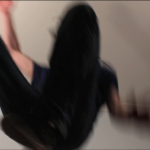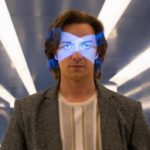Automatic Dialogue
This brief is an attempt to establish a historical background for the outlined artistic work below. Of principal importance is the act of automatism, in particular its relationship to Surrealism. So I shall begin by defining Surrealism and automatism before including the outlined artistic work I mentioned, as being below.
André Breton in his Manifesto of Surrealism (1924) defines Surrealism thus:
“SURREALISM, n. Psychic automatism in its pure state, by which one proposes to express – verbally, by means of the written word, or in any other manner – the actual functioning of thought. Dictated by thought, in the absence of any control exercised by reason, exempt from any aesthetic, or moral concern.”
“ENCYCLOPEDIA. Philosophy. Surrealism is based on the belief in the superior reality of certain forms of previously neglected associations, in the omnipotence of dream, in the disinterested play of thought. It tends to ruin once and for all other psychic mechanisms and to substitute itself for them in solving all the principal problems of life.”
Here André Breton stresses the importance of Automatism and dreams to representing pure unrestrained thought. It is also important to consider his description of Surrealism:
“I believe in the future resolution of these two states, dream and reality, which are seemingly so contradictory, into a kind of absolute reality, a surreality, if one may so speak. It is in quest of this surreality that I am going, certain not to find it but too unmindful of my death not to calculate to some slight degree the joys of its possession.”
Here he talks about how Surrealism offers a blend of states of minds and realities and by extension objects and images – importantly each state, reality, object or image should heavily contradict each other. Demonstrating this concept the Surrealists often have referenced Les Chants de Maldoror (Comte de Lautréamont1868-9)’s phrase: “the chance meeting on a dissecting table of an umbrella and a sewing machine”. I would like to draw your attention firstly to the function of such contradictions. The sublime elements of two completely unrelated things merging into one, offers an idea of analysis. When looking at such elements one should not consider them as different but as a fantastic blend of ideas that are impossible – the more impossible the better. The elements that contain such contradictions should however be seen as different from one another, respecting a lack of a theme other than the attack on rationalism and the interests of merging impossible realities into this ‘Surreality’. We should now reflect upon André Breton commenting that this is a quest, it is not assured to work absolutely, but the quest to find this ‘Surreality’ is reflected within the works of the Surrealist artist.
Looking closer at automatism André Breton writes:
“Poetic Surrealism […], has focused its efforts up to this point on re-establishing dialogue in its absolute truth, by freeing both interlocutors from any obligations of politeness. Each of them simply pursues his soliloquy without trying to impose anything whatsoever upon his neighbor (sic).”
Here he highlights the efforts of automatism and how it should function in the pursuit of Surrealism. The fact that he looks to dialogue offers that he indeed theorised of such a probable use for automatism. Again in his words it is as if he theorises of:
“a monologue spoken as rapidly as possible without any intervention on the part of the critical faculties, a monologue consequently unencumbered by the slightest inhibition and which was, as closely as possible, akin to spoken thought.”
The concept of Automatic Dialogue here appears to be already realised, although seeing any fruits of such a labour appears impossible. But it is in this idea that I take interest.
My outlined artistic work below serves to offer instructions to such an end. Realising as discussed that reaching a state of pure psychic automatism is difficult and not always possible. Such actions follow these lines but with this knowledge of the difficulties in mind. It is for this reason that the optional starting point has been theorised and also why I should stress that the merging of contradictory elements to achieve a sense of ‘Surreality’ may not always occur within such an effort – but it is the endeavour of such an effort that has its merits.
So without further ado I offer my outlined artistic work of instructions which I call Automatic Dialogue:
To perform:
Set a time limit or condition that will end the performance – for example 12 minutes or until an interruption is made.
This is optional but a starting point can be set to help start the performance such as beginning with an initial concept – a bridge, cannibalism, the society of Africa.
Clearing your mind, start speaking without ever considering with your conscious mind what you’re saying (don’t think about what you say just say it).
The theoretical agenda will provide an example of the subconscious completely unrestrained within the performance – this should take the form of unrelated ideas following one another without remaining on any one topic.
Once the condition of the ends is met, the performance shall end.
An example of Automatic Dialogue: An Armadillo in Space:
Further Reading/Recommended Links:
http://www.surrealists.co.uk/breton.php
http://www.tcf.ua.edu/Classes/Jbutler/T340/SurManifesto/ManifestoOfSurrealism.htm
http://pers-www.wlv.ac.uk/~fa1871/whatsurr.html
http://www.ithellcolquhoun.co.uk/7811/
http://www.gosurreal.com/history.htm
http://thumbprintgallery.blogspot.co.uk/2011/01/two-faces-of-surrealism-illusionism-and.html
http://en.wikipedia.org/wiki/Joan_Miró
http://en.wikipedia.org/wiki/Andre_Masson
Breton, André. Manifestoes of Surrealism.University of Michigan Press, 1969.
Breton, André; Eluard, Paul; Soupault, Phillipe. The Automatic Message. Atlas Press, 1998.
Matthews, J. H. Surrealism and Film. University of Michigan Press, 1971.
Matthews, J.H. The Surrealist Mind. Susquehanna University Press, 1991.







Leave a Reply